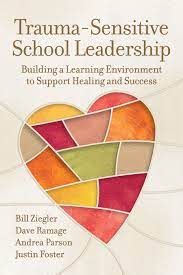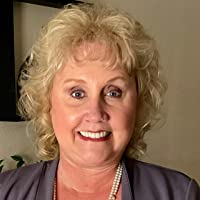Build Trauma-Sensitive School Leadership
Trauma-Sensitive School Leadership: Building a Learning Environment to Support Healing and Success
By Bill Ziegler, Dave Ramage, Andrea Parson, and Justin Foster
(ASCD, August 2022 – Learn more)
Reviewed by Brenda Yoho
I recommend all school leaders and staff read a book addressing trauma. Over the past three years, all of us have experienced trauma, some more than others. Learning about trauma and how to respond proactively are critical as we lead today and in the future.

The book includes forms you can download. The acronym HARM is one tool they recommend for “identifying and ending damaging practices.” “When reviewing your current approaches and when planning new initiatives and events, consider the following points:
- How would someone who has experienced abuse or neglect react to this lesson, question, or experience?
- Are students with household challenges likely to experience a re-triggering of their trauma?
- Reconsider the planned lesson, drill, or event through a lens of emotional or physical neglect your students may bring.
- Mental illness is common; are you supporting understanding and awareness?”
The chapters are laid out to help support a plan for a book study by introducing the first topic to address – “Biases and Barriers.” The first step in creating a trauma-sensitive school is identifying our biases and barriers. Educators need to create environments where we are supporting students and teachers to move past trauma.
Research conducted over many years shows evidence of trauma’s effects on children who live with it daily and experience it in multiple forms. Research also shows which strategies and resources can impact the effects of trauma. A critical component that is a repeated theme in this book is students having a trusted, nurturing relationship with at least one adult.
I suggest selecting this book as a school book study to begin or continue conversations about how to address trauma. Each chapter ends with a few reflection questions on becoming a trauma-sensitive school.
Including everyone in your journey (students are essential) will help bring all of the lenses through which your school is seen into focus. “Your actions – both what you choose to do and purposefully choose not to do – can help create a learning community where all learners have the opportunity to thrive and excel.” (page 15)
The final chapter in the book is a call to action. “Have faith in the fact that lives can change. Even though the darkness of trauma can have lasting effects and may appear to be overwhelming, it doesn’t need to be a life sentence…Perhaps one of the greatest missing pieces in the culture of many schools is hope.” (page 135)
This book will give you a great start toward developing a trauma-sensitive school environment. As a trauma-sensitive leader, begin your own “Call to Action” as you build trusting relationships, bring hope to others, and design a learning environment to support healing.
Brenda Yoho is retired after 25 years in education, having served as a teaching assistant, teacher, assistant principal, principal and Director of Education in PreK through High School in small rural schools and in large unit districts. She blogs at her website, Be the Solution Daily.































